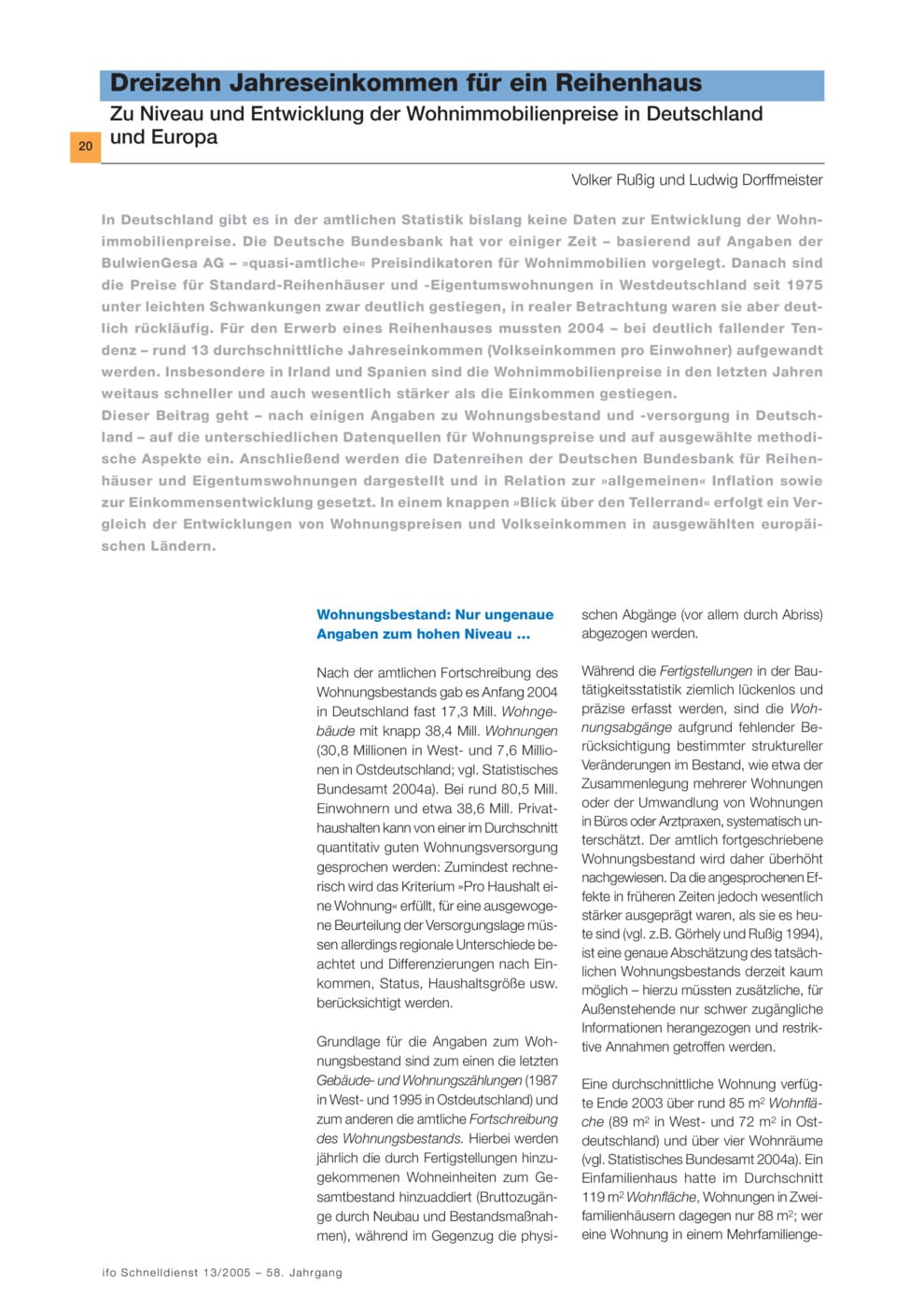Thirteen average annual incomes to buy a row house- Real estate price developments in Germany
ifo Institut für Wirtschaftsforschung, München, 2005
in: ifo Schnelldienst, 2005, 58, Nr. 13, 20-30

The official statistics in Germany provide no data on the development of real estate prices. Recently the Bundesbank presented price indicators for residential property, based on information of BulwienGesa. Accordingly, in the period from 1975 to 2004 the price for an average row house in western Germany increased by 100%, with minor cyclical fluctuations, and the price for an apartment increased by 76%, with apartment prices having stagnated or even declined slightly in recent years. Looking at the same period in real terms, a completely different picture emerges: deflated by the consumer price index, the average price for a row house fell by 5% and for a typical apartment by 16%. In recent years this trend has been somewhat stronger. In contrast, plots of land in Germany have risen in both nominal and real terms, according to official purchase prices. In 1975 a 500m2 plot of land sold for €11,300; in 2004 a similar plot sold for €64,000 or, inflation-adjusted, for nearly €31,500. This was a nominal increase of 460% and a real increase of 180%. At the same time, the number of annual incomes that an average buyer needs to purchase a home clearly declined: in 1975, 19 annual incomes were needed for a row house and in 2004 only 13. For an apartment, 8 annual incomes were sufficient in 2004 (1975: 14). In a European comparison, in Ireland and Spain real estate prices increased at a faster pace than in Germany. Between 1995 and 2003, they increased in Ireland by 250%, and in Spain by more than 150% up to 2004. In the same period, the increase in per-capita income was weaker: Ireland +110%, Spain +50%.